BATMAN WEEK: Best of the best. Always…
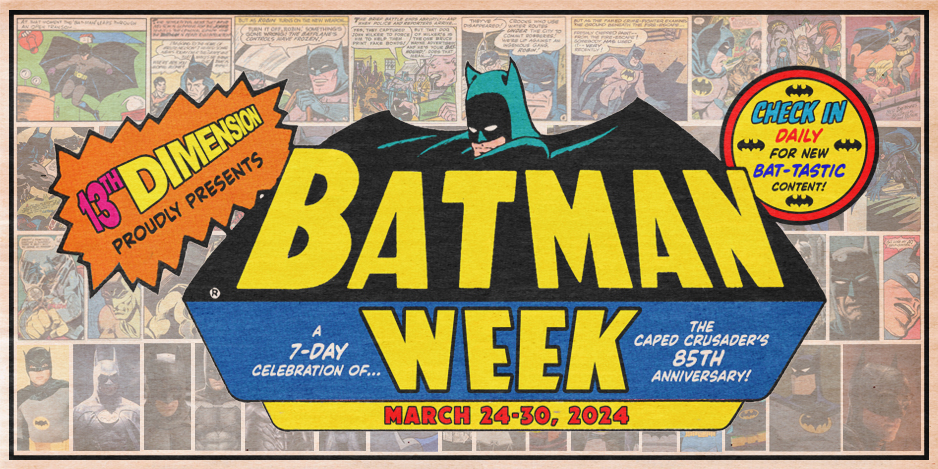
—
Welcome to BATMAN WEEK 2024 — celebrating the 85th anniversary of the release of Detective Comics #27, on March 30, 1939. Over seven days, you can look forward to all sorts of groovy and offbeat columns, features and cartoons that pay tribute to the greatest comics character in the history of mankind. Click here for the rest of the BATMAN WEEK features. You’ll be glad you did! — Dan
—
By PETER STONE
Back when “NEAL ADAMS” was just a kid named Neal, he loved Batman. He was the son of an Army man and grew up for a while in post-war Germany. He drew images of Batman’s car, his Batcave, his Batarang, and the man himself. Superman was cool, but not like Batman. His earliest work was Batman’s 1950s car and his belt and cowl… all precursors to his later output.
In the late ’60s, Neal got his first professional crack at the Caped Crusader when he drew Batman covers over Carmine Infantino’s layouts, while waiting for a chance to draw an actual comic. Finally, after working on the Spectre and Deadman, he got a chance to draw The Brave and Bold. Initially, he drew the Masked Manhunter with short ears and a less than exciting cape. But, as is well known, he took Bob Haney’s scripts and turned daytime scenes into night. He started bringing in his wife (Cory Adams) to color some of his issues to make sure it all worked.
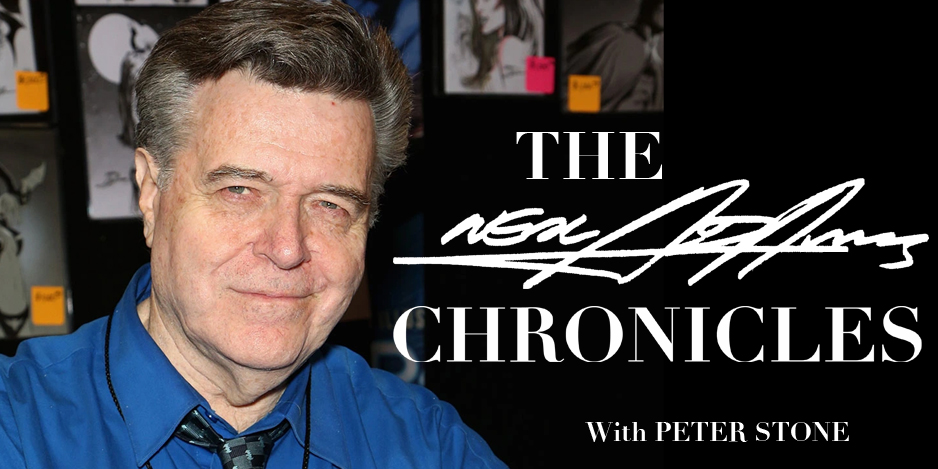
Then Julius Schwartz grabbed Neal (who was drawing the “real Batman” according to the letters pages, as opposed to the version that was influenced by the 1966 TV show) and in 1969, put him on Detective Comics #395, The Secret of the Waiting Graves. This was the best version of Batman and he would only get better.
Neal and writer Denny O’Neil reeled off a run of classic stories. Some were exceptional, but some were still caught in the transition between the TV show and the more modern version of the character. Neal knew who Batman was: He was the greatest human hero of his generation or possibly of any other. He was brilliant. He was better than an Olympic athlete. He knew every martial art.
Neal’s Batmobile was a sleek, powerful, modern sports car. Neal never understood how Batman could sneak up on someone in a car with a giant bat-head on the front. He thought Batman should cruise through the city in a sports car, sliding almost silently upon his prey. For Neal, that is what Batman was. A silent ninja superhero.
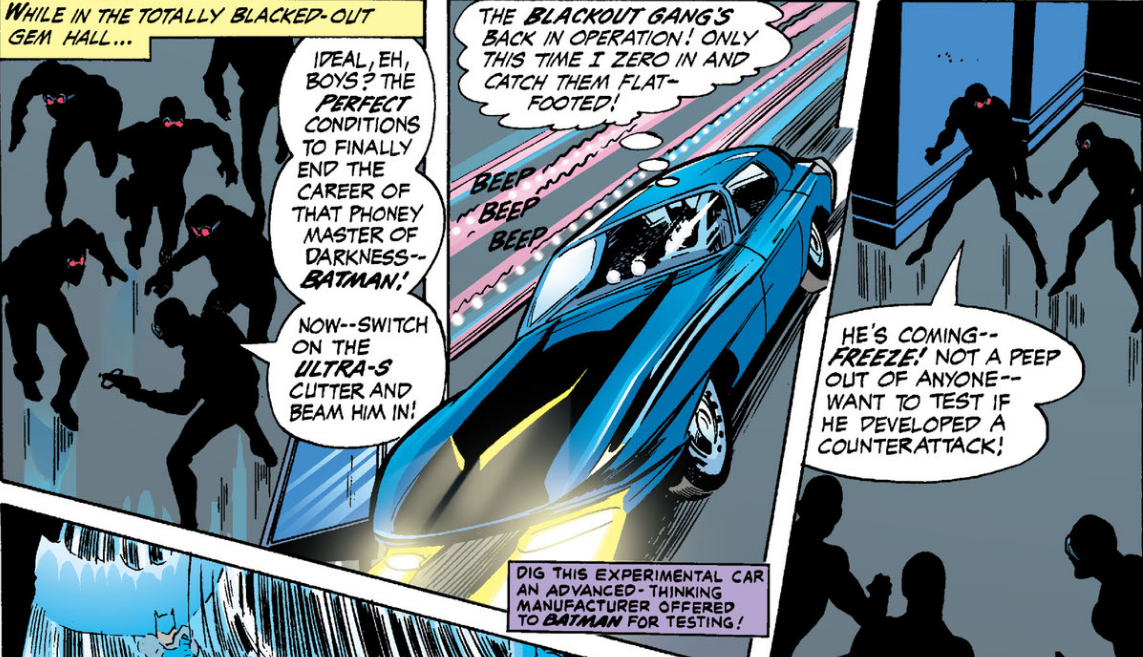
Everyone assumed that Neal and Denny worked perfectly together, but there were a few hiccups along the way. Denny was trained as a journalist so his stories were based on stories you might read in a newspaper. Neal always wanted something bigger and more exciting. Neal took Denny’s stories and made them more exciting, visceral, and artistically brilliant.
He did work with other artists beyond Denny. Len Wein and Marv Wolfman wrote 1970’s Detective Comics #408. Neal kept the script and I read it. At one point, they wrote “3 page fight scene. I leave it up to you, Neal.” Wait… what? I studied martial arts movies, action movies, Stallone movies, Bruce Lee, Jackie Chan, and so many others to understand writing a visual action scene. The writer just gave it up to the artist? But Len and Marv were working with Neal, so they could just “leave it up to you Neal.” Neal would make it work.
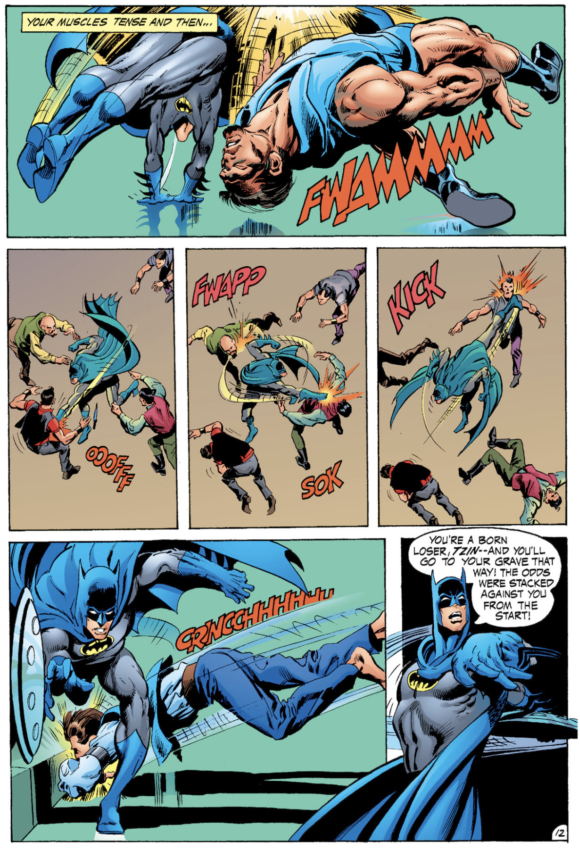
Neal threw himself into it. I must admit it’s one of the best fight scenes in any Batman comic. A ballet of violence. I always think about those three pages when I write action. Batman takes out a dozen guys, flowing from one elbow shot to a punch to a kick to the gut. It’s entrancing.
Neal wanted to do more. He helped created Ra’s al Ghul to be Batman’s Moriarty; he loved Sherlock Holmes. He drew (in my opinion) the sexiest woman ever when he drew Talia and drew the best Alfred of all time. His Robin was always Dick Grayson, a brilliant gymnast and loyal to a fault.
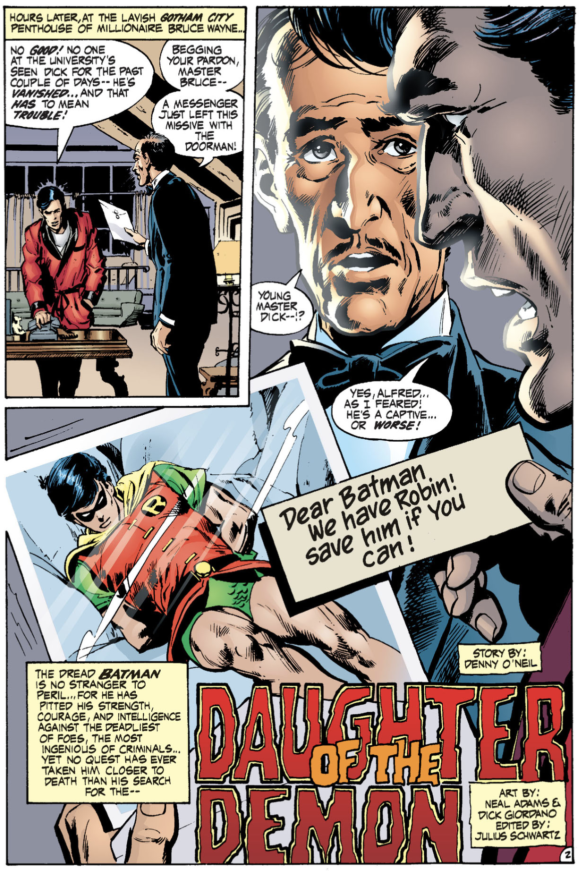
Neal knew Batman needed big adventures. That’s where Ra’s Al Ghul came from. That’s where sexy Talia came from. That’s where Man-Bat came from. A desire to expand Batman from the “clowns” — the Joker, the Riddler, the Penguin. Neal secretly hated all of those characters. He never did the Penguin because… well, an umbrella helicopter? Maybe he could deal with the Joker — and he did, with Denny, in one of their very best stories — but he really wanted to expand Batman’s world.
When Neal drew Batman, he always said Batman was two characters, the man and the cape. The cape should be a carefully designed creature that swirls around the Darknight Detective, covering most of his figure or becoming a wonderfully designed piece of art behind the hero. Batman, however, had to be anatomically correct. A perfect human male, sculpted to look like Hercules or Achilles. Neal always loved Batman despite him saying that his favorite character was the one that was on his drawing table. No, he loved Batman.
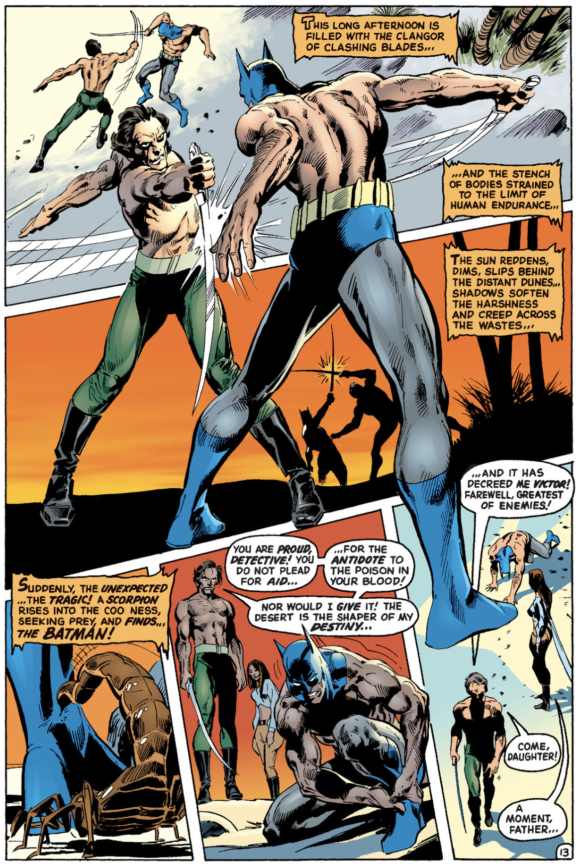
Time moves on and it tends to come back to the beginning. Neal always said Bob Kane was the first visual artist of the Caped Crusader so that’s what he initially attempted to create with his Batman. Everyone loved the modernized, darker look, inspiring an entire younger generation of writers and artists who provided their own interpretations.
After Neal left the character, the Batman languished in mediocrity, with a few spikes of brilliance — Marshall Rogers comes to mind — for a number of years. Then there was a new explosion of talent. Batman emerged as the premiere character after Frank Miller, David Mazzucchelli, Alan Moore and Brian Bolland. They didn’t just give him a new look, they reformed the character for a new age. He was tougher and darker. The Batmobile was a tank. Batman wore body armor. Robin was now a girl. Commissioner Gordon stepped down. Batman fought police. The Joker was far more evil. That darker vision of Batman exists even today.
Great Batman artists have come and gone: Rogers, Bolland, Alan Davis, Norm Breyfogle, Gene Colan, Bernie Wrightson, and so many others. But all are measured against the Adams standard.
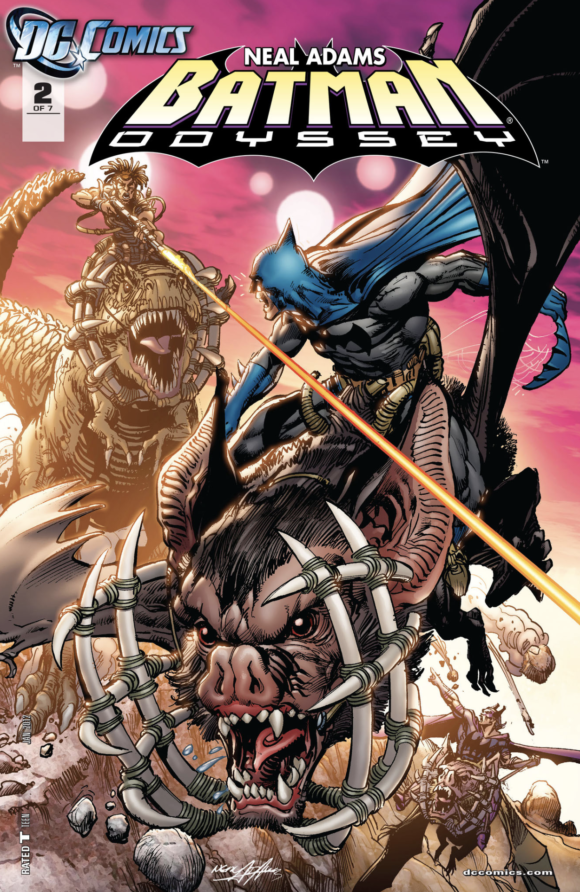
Almost 40 years after he left him, Neal decided to return to a Batman series. Much like Steven Speilberg and Indiana Jones or George Lucas and Star Wars, Neal couldn’t return to an earlier, nostalgic time. He had been away from Batman for decades. It would never be the same again, despite what the fans thought. There’s the famous Thomas Wolfe quote “You can’t go home again” and that’s absolutely true. Ridley Scott can’t do Alien again. James Cameron can’t do The Terminator again. Neal can’t do Batman the same way that he did in 1973. Frank can’t do The Dark Knight Returns the same way he did in 1986. Fans will be upset because their heroes are older… and well, so are they.
Neal craved giving Batman new things to do, but he knew it wouldn’t hit the same way the first time did. He gave Batman a Pellucidar kind of inner Earth with dinosaurs, giant bats, Neanderthals, trolls, gnomes and other weird creatures. Neal altered the history of Ra’s and Bruce Wayne’s father by making them business partners and connected Robin’s parents’ death to the League of Assassins. OMG, the same group assassinated Boston Brand AND the Flying Graysons? Amazing.
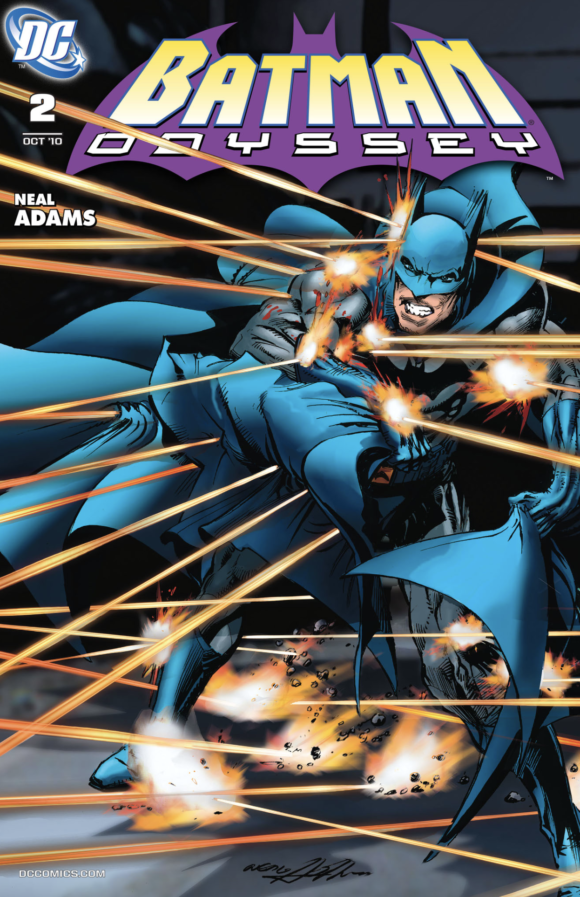
Neal was thinking about writing and drawing a series featuring Batman and the Joker. We had two conversations about what else the Joker could do. Maybe larger concepts. Maybe the Joker could do something no one ever expected. It’s too bad he never got the chance to make that story a reality.
I miss Neal’s view of the world and his desire to do different things with older characters. Someone will realize that it might be cool to send Batman back down into the underworld. It might be great to figure out how Dick Grayson is dealing with the death of his parents by the League of Assassins.
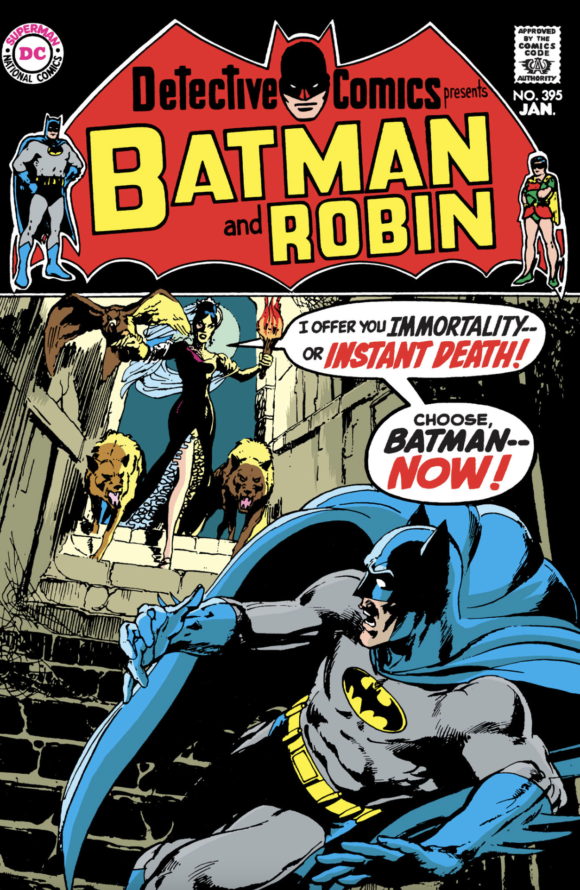
Neal was a lot of things. He was a great artist, but he changed the industry in so many different ways. He helped Jerry Siegel, Joe Shuster, Dave Cockrum, William Messner-Loebs, and so many others. He fought to get artwork returned to artists, fought to get higher page rates and royalties, fought to get money when companies sold his stories overseas, and even worked with production rooms to create new and interesting covers.
However, in the end, he will be remembered most for drawing the best Batman ever.
—
MORE
— The BATMAN WEEK 2024 INDEX! Click here.
— JERRY ROBINSON: How a Tennis Match Led Me to the World of BATMAN. Click here.
—
Peter Stone is a writer and son-in-law of the late Neal Adams. In addition to this column, he also writes 13th Dimension’s Buried Treasure feature. Be sure to check out the family’s twice-weekly online Facebook auctions, as well as the NealAdamsStore.com, and their Burbank, California, comics shop Crusty Bunkers Comics and Toys.

March 28, 2024
Neal Adams was truly one of the best creatives in the comic book industry. Legends like him will always be missed.
March 29, 2024
How could you leave Jim Aparo off of the list of great post-Adams artists?
March 29, 2024
Sometimes, people have personal preferences. Sometimes lists are not meant to be comprehensive.
March 29, 2024
I wouldn’t mind leaving Aparo off the list so much if the article didn’t imply by omission that Aparo was part of “mediocrity” in which Batman “languished” after Adams left. Neal’s the greatest but there’s no reason to suggest, even inadvertently, that Jim wasn’t anything but brilliant, especially his 70s stuff.
March 30, 2024
I personally didn’t read it that way. It wasn’t an absolute list. Aparo belongs, for sure.
March 29, 2024
Neal Adams was a great artist, but I also thought Jim Aparo was too, and is often overlooked. Both were excellent artists in their craft.
March 29, 2024
It might be a good article topic for Peter Stone to write what Neal thought of Aparo.
March 29, 2024
Thank you for this heartfelt article, Peter and Dan. Touching. Moving.
March 31, 2024
You are very welcome, Michael!
March 30, 2024
Why do some comics fans insist on fixating on certain creators to the point that no one that followed them on a character did anything good? It’s fine to praise a creator whose work you enjoyed and made a lasting impact on a series, but there were lots of great stories and art that followed O’Neil and Adams in the Bronze Age. Just because a writer or artist didn’t introduce a major change doesn’t make them bad comics.
March 30, 2024
Did anyone say that? In fact, the story quite clearly states how great these others were. Adams, to me, is the gold standard. That doesn’t diminish the greatness of others. There were plenty of gods on Olympus, but there was also a Zeus.
March 31, 2024
Great article. Neal’s artwork will always be the definitive Batman for me. The same way John Romita’s Spider Man is and John Buscema’s Conan is.